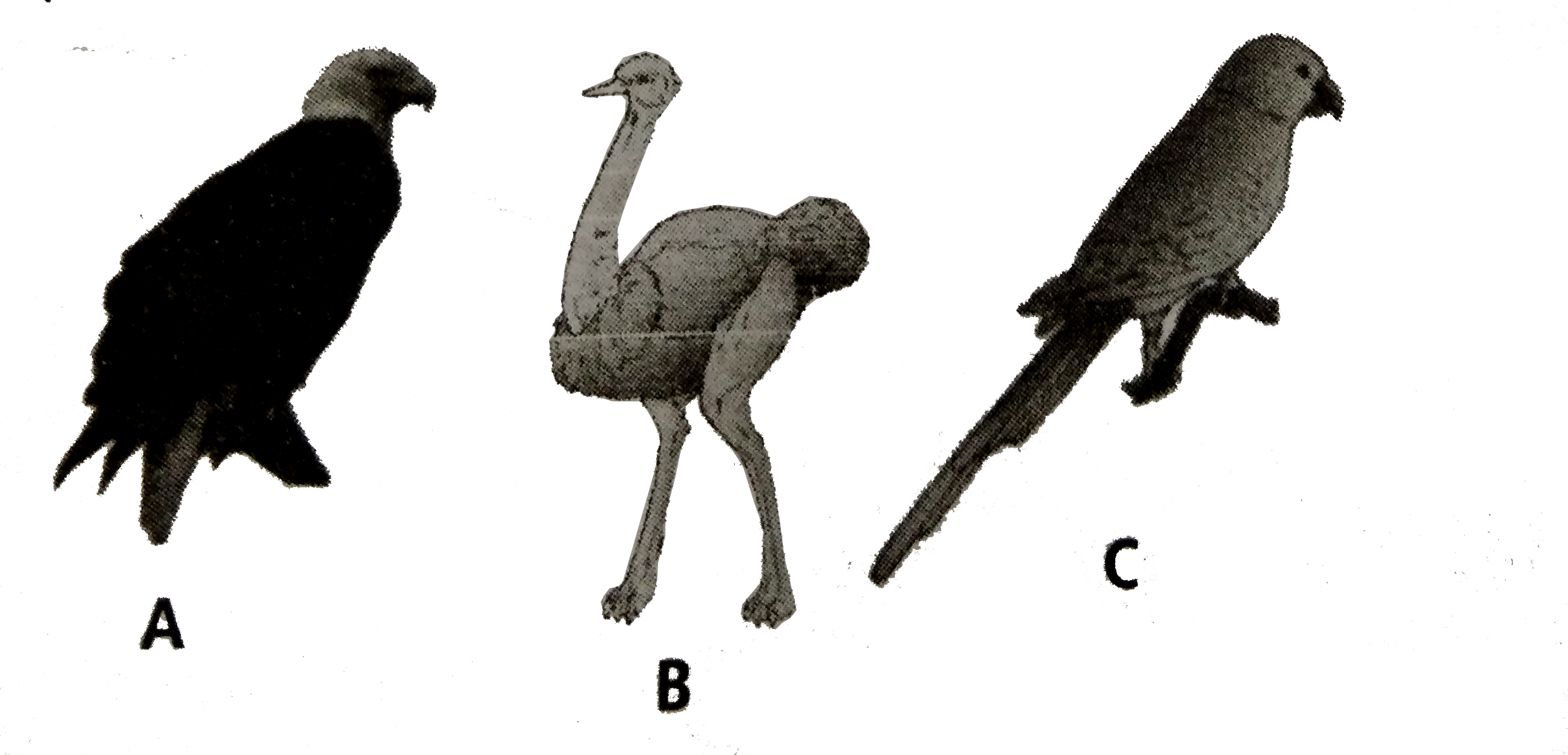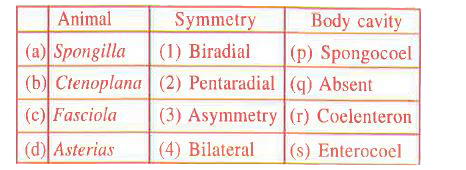Read the following statements and select the correct option
(a) All triploblastic animals are eucoelomates
(b) They have a false coelom .
(b) is correct but (a) is false
both (a) and (b) are true
(a) is correct but (b) is false
both (a) and (b) are false
The correct Answer is:D
To solve the question, we need to analyze the given statements about triploblastic animals and their coelomic structure.
1. Understanding Triploblastic Animals:
- Triploblastic animals are those that have three germ layers: ectoderm, mesoderm, and endoderm.
- They can be classified into three categories based on their coelomic structure: acoelomates (no coelom), pseudocoelomates (false coelom), and eucoelomates (true coelom).
Hint: Remember the three types of body plans based on coelomic structure: acoelomate, pseudocoelomate, and eucoelomate.
2. Analyzing Statement (a):
- The statement claims that "All triploblastic animals are eucoelomates."
- This is incorrect because triploblastic animals can also be acoelomates or pseudocoelomates. For example, flatworms (phylum Platyhelminthes) are triploblastic but are acoelomates.
Hint: Consider examples of triploblastic animals that do not have a true coelom.
3. Analyzing Statement (b):
- The statement claims that "They have a false coelom."
- This is also misleading. While some triploblastic animals (specifically pseudocoelomates) do have a false coelom, not all triploblastic animals fall into this category. Acoelomates do not have a coelom at all, and eucoelomates have a true coelom.
Hint: Clarify the distinction between false coelom (pseudocoelom) and true coelom (eucoelom).
4. Conclusion:
- Since both statements (a) and (b) are incorrect, the correct option is that both statements are false.
Final Answer:
The correct option is: Both a and b are false.
- Triploblastic animals are those that have three germ layers: ectoderm, mesoderm, and endoderm.
- They can be classified into three categories based on their coelomic structure: acoelomates (no coelom), pseudocoelomates (false coelom), and eucoelomates (true coelom).
- The statement claims that "All triploblastic animals are eucoelomates."
- This is incorrect because triploblastic animals can also be acoelomates or pseudocoelomates. For example, flatworms (phylum Platyhelminthes) are triploblastic but are acoelomates.
- The statement claims that "They have a false coelom."
- This is also misleading. While some triploblastic animals (specifically pseudocoelomates) do have a false coelom, not all triploblastic animals fall into this category. Acoelomates do not have a coelom at all, and eucoelomates have a true coelom.
- Since both statements (a) and (b) are incorrect, the correct option is that both statements are false.
The correct option is: Both a and b are false.
Topper's Solved these Questions
- ANIMAL KINGDOM Book:AAKASH SERIESChapter:ANIMAL KINGDOM Exercise:EXERCISE -II (PORIFERA)
Explore 7 Videos
- ANIMAL KINGDOM Book:AAKASH SERIESChapter:ANIMAL KINGDOM Exercise:EXERCISE -II (CNIDARIA)
Explore 5 Videos
- ANIMAL KINGDOM Book:AAKASH SERIESChapter:ANIMAL KINGDOM Exercise:EXERCISE I (MAMMALIA)
Explore 11 Videos
- BIODIVERSITY AND CONSERVATIONBook:AAKASH SERIESChapter:BIODIVERSITY AND CONSERVATIONExercise:EXERCISE-II India - A major Source of Biodiversity and its Preservation
Explore 2 Videos
Similar Questions
Knowledge Check
Select the correct statement
ABoth statements 1 and 2 are correct.BStatement 1 is correct but statements 2 is incorrect.CStatement 1 is incorrect but statement 2 is correctDBoth statements 1 and 2 are incorrect
Read the following statements and choose the correct option :
View SolutionRead the following statements and select the incorrect statement :-
View SolutionRead the following statements and select the incorrect statement :-
View SolutionIdentify the following animals and select the correct option

View SolutionRead the statements given below and select the correct option
View SolutionRead the following statement and choose the CORRECT option.
View SolutionRead the following statements and select the correct option :
(a) All vertebrates are chordates
(b) All chordates are vertebrates
View Solution
